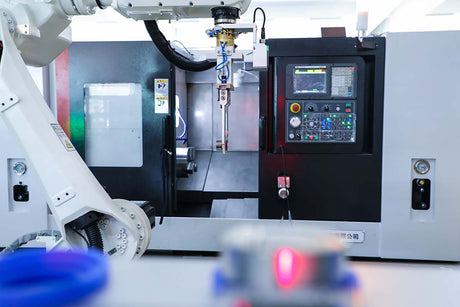In the rapidly evolving landscape of industrial automation,Programmable Logic Controllers(PLCs)have emerged as indispensable tools for optimizing manufacturing processes.From assembly lines to energy management systems,PLCs serve as the backbone of modern industrial operations.This article explores what PLCs are,their applications,implementation strategies,and their transformative impact across industries.

1.What is a PLC?
A Programmable Logic Controller(PLC)is a specialized industrial computer designed to automate electromechanical processes.Developed in the late 1960s to replace cumbersome relay-based control systems,PLCs combine hardware robustness with software flexibility.Key components include:
Central Processing Unit(CPU):Executes logic operations.
Input/Output(I/O)Modules:Interface with sensors,actuators,and machinery.
Power Supply:Ensures stable operation.
Programming Device:Used to write and upload control logic.
PLCs operate cyclically,scanning inputs,executing programmed logic,and updating outputs in real time—a process known as the"scan cycle."
2.Why Are PLCs Essential?
PLCs address critical challenges in industrial automation:
Precision&Consistency:Eliminate human error in repetitive tasks.
Scalability:Easily adapt to process changes via software updates.
Reliability:Operate 24/7 in harsh environments(e.g.,extreme temperatures,vibrations).
Cost Efficiency:Reduce downtime and labor costs.
Safety:Enable fail-safe mechanisms for hazardous operations.
For example,a bottling plant using PLCs can achieve a 30%reduction in defective products while doubling production speed.
3.How Do PLCs Work?
Implementing a PLC system involves three stages:
A.Programming
PLCs use standardized languages per IEC 61131-3 standards:
.Ladder Logic(LD):Mimics relay-based wiring diagrams.
.Structured Text(ST):High-level language for complex algorithms.
.Function Block Diagram(FBD):Visual programming with reusable blocks.
B.Hardware Configuration
.I/O Setup:Connect sensors(e.g.,temperature probes)and actuators(e.g.,motors).
.Communication Protocols:Integrate with SCADA,HMI,or IoT platforms via Ethernet/IP,Modbus,or Profibus.
C.Testing&Deployment
Simulate logic in a virtual environment.
Monitor real-time diagnostics for troubleshooting.
4.Where Are PLCs Used?
PLCs are ubiquitous in industries requiring precise control:
| Industry | Application Example |
|---|---|
| Automotive Manufacturing | Robotic welding, paint shop automation |
| Food & Beverage | Batch processing, packaging line control |
| Pharmaceuticals | Sterilization, pill counting systems |
| Energy Management | Smart grid stabilization, wind turbine control |
| Water Treatment | pH monitoring, pump station automation |
A notable case is Tesla’s Gigafactories,where PLCs synchronize hundreds of robots to produce electric vehicles at unprecedented speeds.
5.Advantages Over Traditional Systems
PLCs outperform older control methods in multiple ways:
Flexibility:Reprogramming takes hours instead of rewiring relays for weeks.
Data Integration:Collect and analyze operational data for predictive maintenance.
Modularity:Expand I/O capacity without replacing the entire system.
Cybersecurity:Modern PLCs support encrypted communication to thwart cyberattacks.

6.The Future of PLCs
Emerging trends are reshaping PLC technology:
Edge Computing:PLCs with embedded AI analyze data locally,reducing cloud dependency.
Digital Twins:Virtual PLC models simulate real-world systems for optimization.
IIoT Integration:PLCs act as nodes in Industrial Internet of Things(IIoT)ecosystems.
Open-Source Platforms:Initiatives like PLCnext encourage community-driven innovation.
By 2027,the global PLC market is projected to exceed$15 billion,driven by Industry 4.0 adoption.
PLCs are far more than"industrial computers"—they are the linchpin of automation,enabling smarter,safer,and more efficient manufacturing.As industries embrace digital transformation,PLCs will continue to evolve,bridging the gap between physical machinery and intelligent decision-making.For engineers and businesses alike,mastering PLC technology is no longer optional;it is a prerequisite for thriving in the age of automation.

